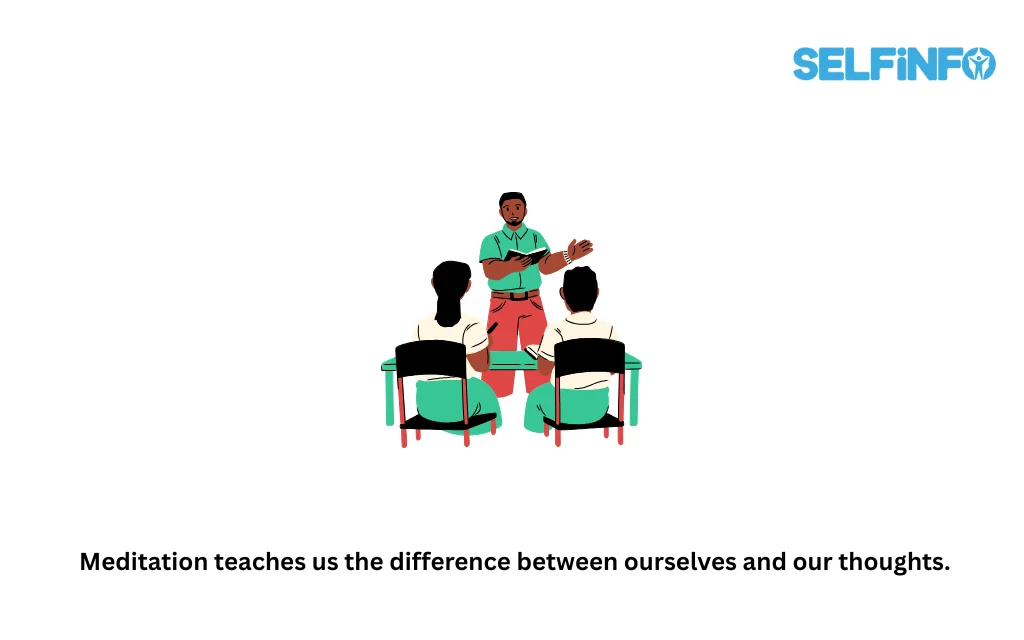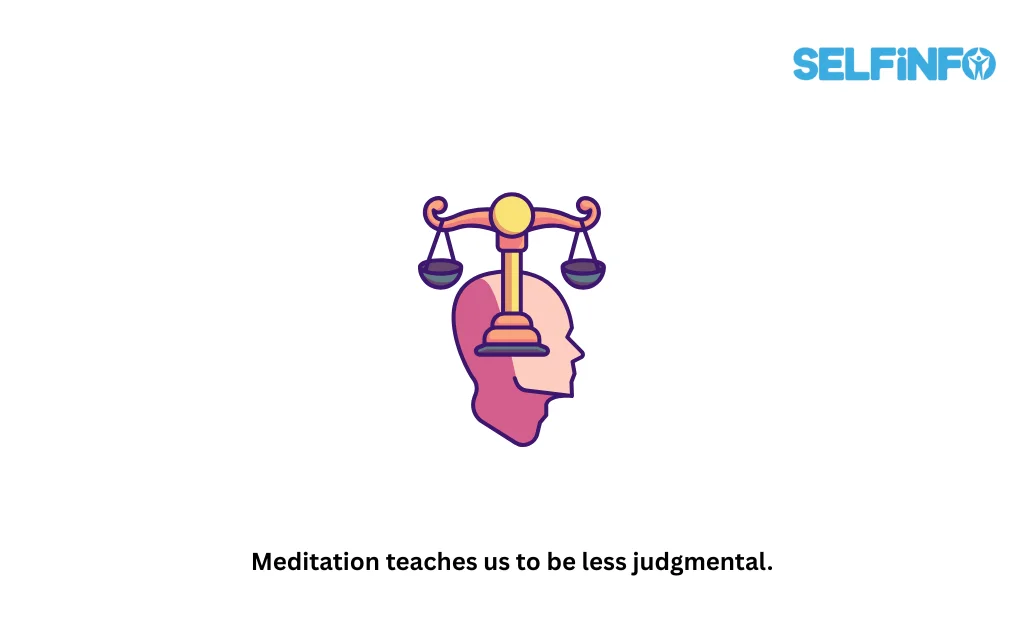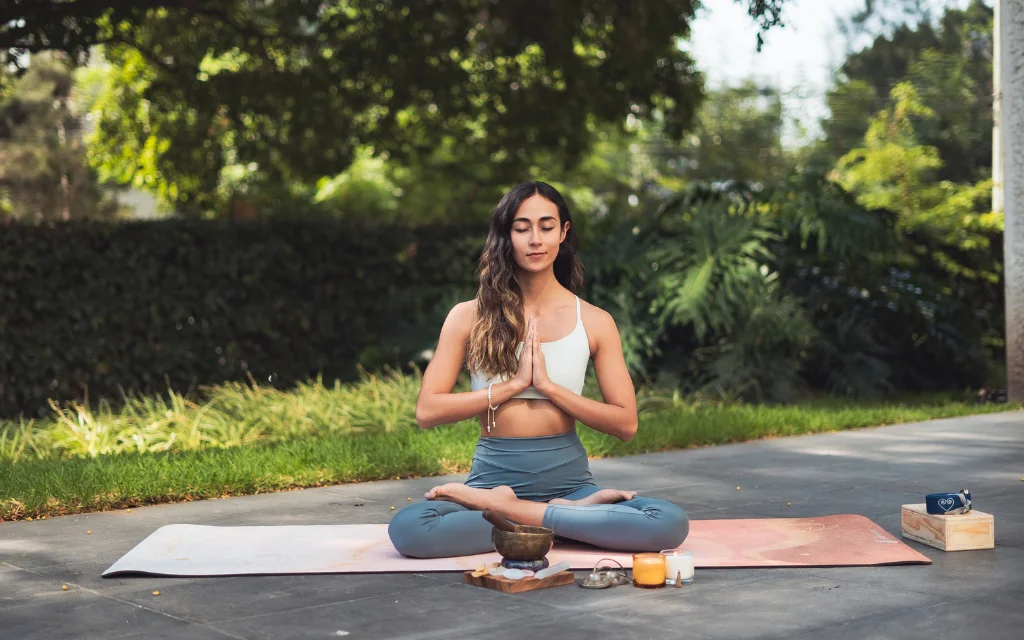Meditation improves how I coped with anxiety back in 2001. As a college freshman, yoga especially savasana became my calm in the chaos. It was truly the loveliest pose.
For those who are not familiar, savasana, also known as corpse posture, is a meditation-like position in which one surrenders and observes thoughts and sensations without passing judgment. (It is the position where everyone appears to be dozing off.)
At the time, most people still thought of yoga and meditation as hippie practices for flaky people. I had not had the opportunity to practice yoga before college because there were not any classes offered in the area of my birthplace in Connecticut. And from what I understood, monks practiced meditation on the slopes of mountains.
I probably would not have known the tranquility of savasana for years if my college had not required the three physical education credits.
Like most others, I had a great deal of stress during my time in college. At this point, I was still unaware that the majority of my life had been characterized by anxiety. All I knew was that my skin was crawling due to the angry regularity of the bee’s nest that was residing inside my chest.
Even though I had my handy false ID, which was shockingly easy to procure back then, I did not often go to parties or pubs. We did not have cable, and YouTube was not yet around, so I spent a lot of time in my dorm room watching Empire Records, Tommy Boy, and The Emperor’s New Groove on VHS out of dread of what the “far cooler” students would think of me.
I was worn out from worrying about making my folks proud. I was plagued by the anxiety of not knowing the answer when I was called upon in class. I was crushed by the weight of getting a B and the need to be at the top of every class.

I had no idea how to get away from these emotions. The tools were not provided to me. I was not informed of its nature. I was brought up in a “suck it up” environment and assumed I would just have to “live with it.”
I began to inflict some externally to divert my attention from the inside suffering. To have a more concrete agony to concentrate on, I would dig my nails into my arms or bite at my skin with a dullish blade. I would not do this to break the skin. One that I could direct, one that I could see, point to, and identify its source.
I could not seem to have the words to express how I felt, even though I understood it was not healthy or productive. I simply knew that was my best thought at the moment.
Fortunately, such “solution” was short-lived. The final eight minutes of the yoga practice quickly became my saving grace.
The class took place on the cold, hard concrete floor in the basement of my dorm building, which was hardly carpeted. It was in the middle of the day, and I always felt great after the class’s lovely last posture. It is still my favorite part and the reason I went.
Five to ten minutes would be the duration of the quiet. I was instructed to pay attention to the pauses in between my breaths. I began to realize that there was a place I could go where the cacophony would only last a few seconds, but it felt like it lasted much longer.
It was so peaceful. At times, it seemed as though my brain was experiencing a surge of relaxing hormones. For want of a better word, it was amazeballs.
Amazeballs

balls of amazement (ə̈māzbôlz)
Informal, adjective
incredibly excellent or remarkable; wonderful.
There was no need to flee, no crawling skin, and no bee’s nest at those moments. I was at peace for a few minutes every day, three days a week.
I eventually realized that I was retaining that stillness throughout the remainder of the day. It gave me energy.
However, because I was unable to “shut my thoughts up,” I occasionally felt that I was doing it incorrectly. I was effectively meditating, but I was unaware of it. I had no idea what I was actually learning from the process. I was unaware of its profound effect. All I knew was that I felt fantastic afterwards.
I am writing this piece for that reason. Since those wonderful days on the chilly cellar floor, I have been practicing meditation for years, and over that time I have discovered how and why it is beneficial to my anxiety, confidence, and general mental well-being.
I wish I had known earlier in life what meditation was doing for me. If I had known these things at the time, I would have found a qualified instructor much sooner, started practicing mindfulness every day rather than once a week, and learned how to do it outside of the cushion as well.
1. Meditation teaches us the difference between ourselves and our thoughts.

Meditation teaches us to recognize when a thought is occurring and when it has captured our attention and caused us to become engrossed in it. We return our attention to a place of concentration after realizing this.
The idea that you are not your thoughts will be presented to you when you begin to meditate. that they are not the same thing.
When I first heard this concept, it completely blew my mind. “What am I if I am not my thoughts?”
We refer to it as our Wise Advocate. Some refer to it as our soul or inner self. I simply refer to it as Me.
Consider your brain to be an additional organ of perception. The brain thinks, the ears hear, and the eyes see. Just as you are not what you see, you are not what you think.
Ideas rather than facts are presented by our minds. Simply said, a thought is a phrase that our brain’s neurons have created. The decision to trust the idea or to go with a different one that feels more in line with our beliefs and identity is with us.
We have the ability to make a decision when we distinguish between the two—there is me and there are my thoughts. We are neither victims nor subjects of the thoughts that our brains produce.
“I suck,” “I can not handle this,” and “No one will like me” are examples of concepts our minds have created; they are not facts.
We must acknowledge that that is a thought, not us. We have the option to believe it or to doubt it, reinterpret it, and come up with a better idea.
This ability to notice thinking, identify it for what it is, and distance oneself from it sufficiently to decide where to go next is developed via the practice of meditation.
2. Meditation teaches us how to let go of thoughts, and improves sleep.
My mind will not stop talking! When I asked my doctor for anything to help me fall asleep, I told him.
Meditation is similar to a mental workout. But rather than lifting weights to gain muscle, you are strengthening your mental fortitude by writing down your thoughts.
During meditation, we observe when thoughts come to mind and then gently refocus our attention. The sound of a mantra, the sensation of your body, the movement of your breath, or the image of a mandala could all serve as an anchor to help you return to the here and now.
After that, your thoughts will stray once more. Then you return it. After that, it stray. Then you return it.
It is similar to working out in the gym. By strengthening the “muscles” that bring your mind back to the here and now, you are gaining greater control over where your attention goes.
Additionally, you get more adept at letting go of ideas over time, particularly ones that do not benefit you. This facilitates falling asleep, overcoming bad moods, clearing your head, and discovering more tranquil moments in life.
Fear, worry, rumination, and thoughts are what keep us awake at night. I became so accustomed to these mental patterns that it was difficult for me to stop daydreaming while I was attempting to go to sleep.
We can fall asleep by learning to detach ourselves from the thoughts that are spinning on the hamster wheel.
3. Meditation teaches us self-compassion and patience.
Although the idea of meditation is quite straightforward, it is not always simple, particularly when we are just beginning.
Thoughts are always coming and going. Giving us thoughts is one of the functions of our brains. We constantly become aware that we are thinking when we meditate. “Well, that is an idea.”
It takes practice to learn to disassociate ourselves from that thinking. It also takes time to practice.
You cannot push yourself to “get deeper” into meditation, any more than you can force yourself to fall asleep. You let it occur. Patience is required.
And a lot of our anxiety stems from a desire for the emotion to end and for us to find happiness in the future.
We learn acceptance through meditation.
Sometimes you could find it aggravating that you are thinking about your meditation the entire time, as if you are doing something incorrectly.
It is also possible that you have been meditating for a while and believe you “should” have made more progress in your ability to stop becoming so tied to your thoughts.
However, the practice teaches us to accept this as the way our brain functions and to be gentle to ourselves. that we are perfectly in good health.
Accepting the current moment for what it is, particularly when it is not to our liking, requires self-compassion.
4. Meditation teaches us to be less judgmental.

We judge others and ourselves all the time. We categorize people as “good” or “bad” depending on their behavior or appearance.
Our judgment sets us apart from others. It is alienating.
And we act in the same way when we evaluate ourselves. We are distancing ourselves from one another. Being less attractive, intelligent, or talented might make us feel lousy. Because of this judgment, we are placed in a different category and are isolated from other people, which makes us feel lonely.
An essential component of meditation, particularly mindfulness meditation, is nonjudgment.
Being mindful is intentionally and impartially focusing on the here and now. This entails experiencing without assigning labels or passing judgment.
Right now, everything is just as it is, neither good nor bad. A notion is neither good nor harmful in and of itself. It is only photos or words. Just a passing thought. Unless we decide to give it significance, it has no meaning.
We become aware of our thoughts while we meditate. We pay attention to how we feel. We feel the sensations in our bodies. However, we do not condemn them.
We go curiously toward them. “That is interesting, is not it? I felt self-conscious when I realized I was rolling my stomach while I was sitting here.” The breath comes up again.
5. Meditation teaches us to not run away from our feelings and become confident.
We will observe the emergence of emotions during meditation. Some are agreeable, while others are not. However, we are also learning to let these things happen because we are learning not to judge them when they occur.
Fear, wrath, sadness, and impatience are examples of unpleasant feelings that we naturally wish to avoid, hide from, or numb with food, drink, drugs, or television.
Because we associate comfort with security, we are drawn to it.
However, emotions are not capable of causing us physical harm. They may result in heat, heaviness, queasiness, and tense muscles. However, a single emotional experience does not cause any bodily injury.
We think, “I do not want to feel this, I should not feel this, it is awful to feel this,” when we experience this distressing emotion. And we suffer more as a result of our resistance.
It is similar to being struck by a second arrow. The unfavorable emotion was brought on by the first arrow. This occurs and is a natural part of life; we are all supposed to feel a variety of emotions, both good and bad.
But you can avoid the second arrow. Suffering is choice, but pain is unavoidable. We hurt ourselves more when we push back against that unpleasant emotion rather than embracing it and letting it come through us.
We must give ourselves permission to experience these emotions, to let them come and go. We see how a sensation or a notion cannot hurt us. It is only going by.
6. Meditation can help you break habits and literally rewires your brain with new patterns.

Were you aware that your thoughts have the power to mold your brain? As in, literally. The connections in your brain are shaped by your thoughts and experiences.
Neurological connections are formed between thoughts and actions. The brain tells us to “save this as a habit” if we do something frequently enough or if our actions produce the desired consequence. akin to preserving a computer application.
Anxiety, stress, worry, rumination, and even daydreaming can all develop into habits.
Habits are liked by the brain. It makes it function more effectively. Your brain will store anything you have done in the past that was even somewhat successful in a safe location.
Rumination, for instance, might become a habit. If you have previously worried about something and it seemed like a good way to get ready for what is coming up, the brain interprets that as a successful pattern, and presto! You worry all the time.
When a stressful situation comes up in the future, your brain will activate this program since it is quicker and easier than coming up with a fresh concept from beginning.
You store those habits and have the program run automatically once you are behind the wheel, much like having to relearn how to drive every time you get in a car would be a lot of work.
Through the process of neuroplasticity—the brain’s capacity to create new connections—meditation rewires your brain (you can teach an old dog new tricks!). Habits begin to change. Additionally, we begin to have greater control over our thoughts, emotions, and actions.
This, in my opinion, is the most awesome aspect of meditation. Eventually, it enables us to react to circumstances as we see fit rather of always instantly reverting to our old, painful behaviors. It enables us to fully develop into the individuals we know and desire to be.
